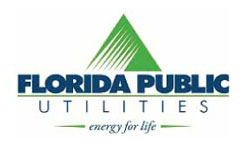by Scott Ranck
I remember as a child my mom hanging clothes out in the backyard on a clothes line. These days, most American homes come with a clothes dryer. Clothes dryers are more convenient, work faster, and some may argue that they will keep the clothes cleaner and less wrinkled.
I will offer a few tips as to how to get the most from your clothes dryer and then compare natural gas clothes drying to electric clothes drying. First, let’s consider a few energy-saving tips:
- Clean your lint screen after every use. This allows better air flow, quicker drying.
- Periodically, make sure your dryer vent is not kinked or clogged with lint. A clogged vent can hinder drying and also become a fire hazard.
- As much as possible, always dry a full load.
- When doing more than one load, do them immediately after each other to benefit from an already hot dryer.
The two most common types of dryers used are either natural gas or electric. Natural gas dryers use 30,000 BTUs of gas per hour costing approximately $.35-40 per hour of 
operation. Electric dryers use 5,500 watts or 5.5 kilowatts per hour or approximately $.60-.68 per hour of operation. Natural gas dryers operate at a slightly warmer temperature and dry clothes in less time.
Comparing apples to apples, the cost to buy a dryer is slightly higher for a gas dryer but usually within $50 of its electric counterpart. Florida’s investor-owned natural gas utilities offer a conservation rebate for installing a natural gas dryer for the first time or even as a replacement for an older dryer. Contact your natural gas utility for details.
For any questions about clothes dryers or other energy related topics, contact your energy experts at Florida Public Utilities at www.fpuc.com/energyexpert.
 Scott Ranck is the Conservation Program Coordinator & Energy Specialist for Florida Public Utilities. Feel free to e-mail any energy-related questions or comments to Scott at sranck@fpuc.com.
Scott Ranck is the Conservation Program Coordinator & Energy Specialist for Florida Public Utilities. Feel free to e-mail any energy-related questions or comments to Scott at sranck@fpuc.com.
